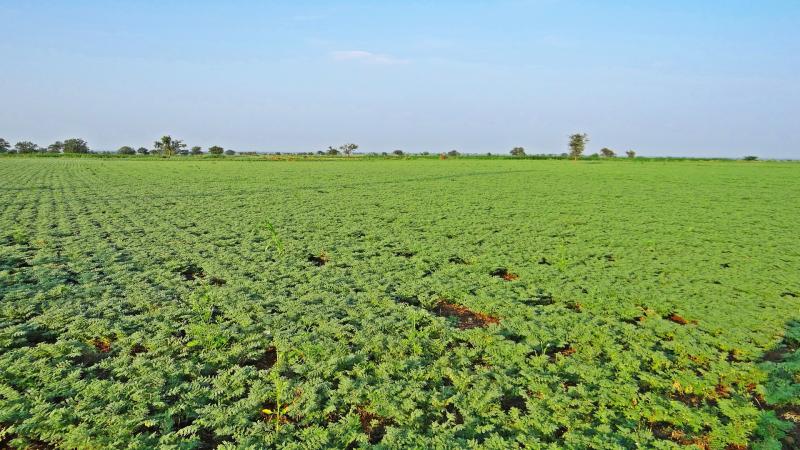
Thanks to good yields each year, you still have the chickpeas in your channa masala. Apart from the farmers who toil to grow this crop, did you know that a humble bacterium influences its yield? Yes, the chickpea plant hosts a microbe called rhizobium in its roots that helps in naturally fertilizing the plant, without the need for ecologically harmful chemical fertilizers. While chickpea is believed to have come to India from Turkey a few centuries ago, from where did it get its microbe partner? Did the original rhizobium strain from Turkey hitch a ride along with its host, or did it find other local strains here? In a recent study, an international collaboration of researchers, including those from India, may have answers.
Nitrogen is a vital nutrient for plant growth. Although it is abundant in the air, plants cannot directly absorb it. Bacteria like rhizobium, which live in bead-like nodules in the roots of pulse plants, have an uncanny ability to convert nitrogen from the air into plant-absorbable forms. Through the process of nitrogen-fixing, they turn nitrogen into salts of nitrates, which provide nutrients to plants just like chemical fertilizers do. The plants, in return, provide food and shelter to the bacteria. Hence, farmers in many parts of the world actively introduce lab strains of rhizobium, that are good at nitrogen-fixing, into chickpea fields.
The downside, however, to introducing lab-cultured rhizobium could be its inability to maintain the partnership with the host for a long time. Can these bacteria stand up to the competition they face from local strains of rhizobium, which might have, in all probability, already been better adapted to the soil? What does this competition mean when the chickpea, from its place of origin, spread to across the world? What happened to the original strain from Turkey? The current study, published in PNAS, provides some insights.
The researchers collected rhizobial bacterial strains from chickpea cultivated across the world, including North America, Australia, Morocco, Ethiopia, and India. They also collected samples associated with wild chickpea plants from the native range of southeastern Turkey. They analyzed the genes of these bacterial strains to construct evolutionary relationships between different strains, which can then answer how they have spread across the world. The researchers also studied how the distribution of these strains was affected by local soil conditions.
Based on their findings, the researchers hypothesize what may have been the rhizobium's trail. Initially, when the chickpea spread from Turkey, the original strain of rhizobium that was associated with it might also have hitchhiked with its host. But it may have faced stiff competition from the local rhizobial bacterial strains, and in the process, may have lost out. Local rhizobial strains may have received a gift of genes required for associating with the plant and thereby ousting the hapless original donor bacteria. This gene transfer, the study finds, is achieved through horizontal gene transfer—a kind of exchange of genes that can happen even between not-so-closely related species.
The findings have implications on how chickpea is grown today. The average annual production of chickpea has risen from 4.88 million tonnes a few decades back to 7.38 million tonnes now. Almost half of the pulses produced in the country is chickpea. For a better yield, the researchers suggest farmers be provided with select strains of bacteria that are locally adapted, but with better nitrogen-fixing ability as they can have a long and fruitful association with the crop.






